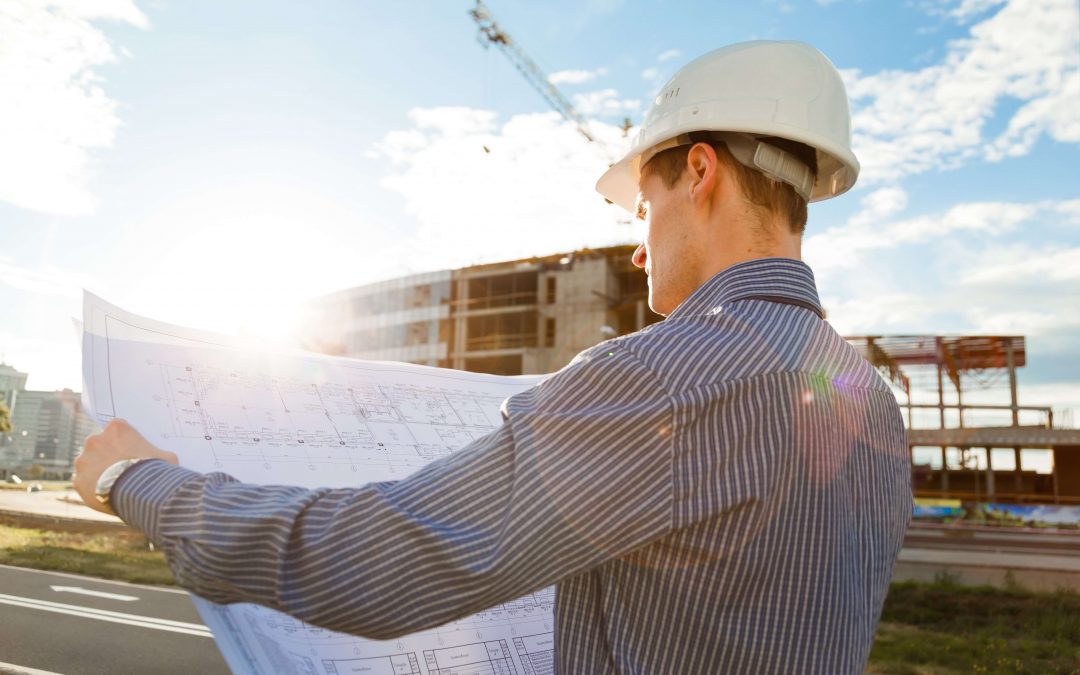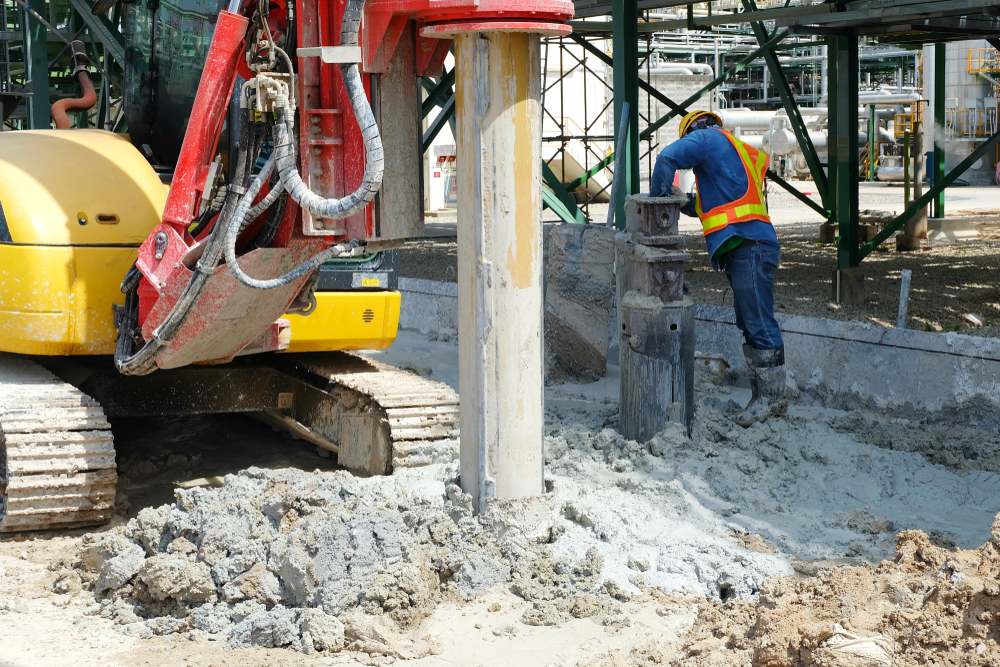Getting My Geotechnical Engineering For Construction Projects To Work
Getting My Geotechnical Engineering For Construction Projects To Work
Blog Article
Geotechnical Engineering For Construction Projects Fundamentals Explained
Table of ContentsGetting My Geotechnical Engineering For Construction Projects To WorkGetting The Geotechnical Engineering For Construction Projects To WorkAbout Geotechnical Engineering For Construction ProjectsSome Ideas on Geotechnical Engineering For Construction Projects You Should KnowGeotechnical Engineering For Construction Projects Can Be Fun For AnyoneThe 25-Second Trick For Geotechnical Engineering For Construction ProjectsGeotechnical Engineering For Construction Projects Can Be Fun For EveryoneThe smart Trick of Geotechnical Engineering For Construction Projects That Nobody is Talking About
Coinciding with this boosted complexity comes geological and ecological aspects that influence the style of the structure, which is perhaps one of the most integral part of any growth. People need to trust that structures, bridges, and highways will certainly stand the test of time. A Geotechnical engineer suggests on how a framework can best be supported offering its one-of-a-kind situations What's concealed below the surface of the ground is most likely the most vital item of information that a Geotechnical Designer seeks.These samples are then analyzed by the laboratory to figure out dirt structure (Geotechnical Engineering for Construction Projects). The malfunction of sand, silt, clay, and other products existing in the soil, assists the designer identify what distinct qualities the site has and what the implications of those might be. Naturally soil structure is just one examination that can be executed on samples
The Best Strategy To Use For Geotechnical Engineering For Construction Projects
Based upon these examinations, there might be more dirt borings that are drilled, or the designer might have sufficient info from the first tests to make a recommendation to the client on how ideal to proceed with their project. Results are typically reported through borings logs which show the soil structure and attributes at a selection of midsts.
Geotechnical engineers are responsible for recognizing the buildings of natural deposits and using this understanding to establish risk-free, affordable styles for construction jobs. It is a crucial component of any civil engineering task, as it is used to identify the viability of a site for building and to guarantee the structure's security.
This includes doing lab tests on the samples and utilizing geophysical approaches such as seismic refraction and electrical resistivity studies. This data is used to analyze the site's viability for building and to identify the sort of foundation that must be used. Geotechnical design examines soil conditions, recognizes potential dangers, chooses an ideal foundation system for the suggested structure, and identifies the most effective foundation style for a given job.
Rumored Buzz on Geotechnical Engineering For Construction Projects
The structure may become unstable or collapse without appropriate soil stabilisation, resulting in expensive repair work and prospective injury. The stabilization process involves making use of numerous strategies to boost the security of the dirt, such as compaction, grouting, and the enhancement of strengthening products. Without soil stabilization, the dangers connected with building jobs would certainly be a lot higher, and the results much less trustworthy.
Geotechnical designers conduct website examinations to analyze the dirt's properties and recognize prospective threats. They create and implement dirt stablizing approaches, such as adding cement, lime, or various other maintaining representatives, to improve the dirt's strength and security.
Little Known Facts About Geotechnical Engineering For Construction Projects.
Geotechnical engineers are essential in aiding to guarantee that dirt stablizing is done appropriately to make sure that the framework is secure and protected. Geotechnical engineering is additionally utilized to examine dirt conditions and identify possible threats. This includes examining possible flooding, landslides, and various other natural calamities that could impact the structure.
Geotechnical designers use this expertise to Homepage perform website investigations, soil, and rock testing, and to analyze the outcomes to figure out the appropriate style specifications for a job. This details is made use of to ensure that the structure, preserving walls, inclines, and other frameworks built on or within the subsurface products have adequate stability and resistance to external lots, such as earthquakes, wind, and water.
These structures call for a deep understanding of the habits of the subsurface products, in addition to the ability to take care of the influence of excavation and building and construction on the surrounding environment. Geotechnical designers utilize their experience to identify the proper style specifications for these structures, such as the shapes and size of the tunnel, the stamina of the sustaining rock, and the kind and amount of assistance required.
In enhancement to the style and building of frameworks, geotechnical design also plays a vital duty in the rehabilitation and upkeep of existing structures. As structures age, they may experience degradation or other issues that affect their security and performance. Geotechnical engineers use their knowledge to analyze the condition of these frameworks, determine the causes of the issues, and create approaches to address them.
The Geotechnical Engineering For Construction Projects PDFs
In this article, I will certainly review the function of geotechnical design and the kinds of issues geotechnical designers fix. Geotechnical designers (geotechs) are included in almost every kind of civil engineering project. After all, every structure is sustained by dirt or rock unless it is drifting, flying, or dropping.
Geotechs are normally most included at the beginning of a project. Geotechnical Engineering for Construction Projects. Some of the jobs that a geotech may be liable for are checking out subsurface conditions, identifying required lab screening of dirt and rock, analyzing the subsurface exploration results, and composing records that record the site problems and give see page recommendations for foundations, fill specs, incline security, etc
It is not uncommon for geotechnical engineers to concentrate on just one of the locations listed above and study that subject their whole profession. Geotechnical engineering is a vital facet of any type of civil engineering project. Despite how terrific a structure is built, it will certainly not be excellent for long if the structure is insufficient.
Everything about Geotechnical Engineering For Construction Projects

Usually, things that might not seem important end up being vital years later when problems arise. One last point to remember: geotechnical design is wed to geology. Despite just how fantastic your design competence is, if something essential is missed in the geologic characterization at a website, your expertise may not conserve you.
Jese lives in West Virginia with his spouse and child. He appreciates crawling around on any landslide he can discover and investing time fly angling on the water. He can be located on LinkedIn. I wish you appreciated today's blog post by guest writer Jese Vance. If you have an interest in your firm possibly signing up with the Civil Design Collective, please contact us right here or call us at 800-920-4007. I hope you'll join us.
Excitement About Geotechnical Engineering For Construction Projects

It is very important to design the foundation to withstand all-natural and manufactured loads. Loads can be upright or side. It is necessary to understand the dirt problem prior to making the type and deepness of foundation needed for the framework. In order to recognize the subsurface soil problem, a geotechnical examination is needed.
Geotechnical Engineering For Construction Projects for Beginners
When the examination results come, the Geotechnical Engineer analyses the report, which details the soil and rock homes groundwater problem and the associated threats. The type of foundation required to develop the structure is then established. Based on the suggestion of the Geotechnical Engineer, the architectural designer then makes the framework.
Report this page